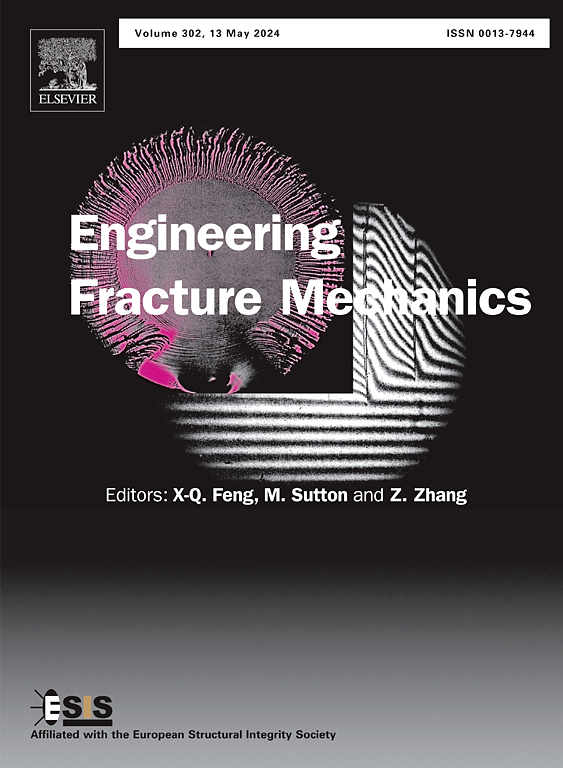Cohesive zone model for the thermomechanical deformation of a high temperature tubular solid oxide electrolysis cell
IF 4.7
2区 工程技术
Q1 MECHANICS
引用次数: 0
Abstract
High-temperature processes for hydrogen production unlock the potential for high energy efficiency combined with a relatively low environmental impact. However, structural integrity should be carefully considered. Solid oxide electrolysis cells (SOEC) employ a range of ceramic and metallic materials capable of withstanding high temperatures, ranging from 500 °C to 1000 °C, while facilitating active electrochemical reactions. The present structural analysis focuses on the challenge of anticipating the formation of debonding cracks at the interfaces of layers (assumed non-porous) within a single SOEC cell with a tubular design and a metal support. This study includes implementation of material properties for ceramic mixtures, model verification, analysis of deformation, stresses, crack formation using the cohesive zone model (CZM) – a method commonly used to simulate the process of crack initiation and propagation. In this pioneering research, several potential areas of debonding have been identified, with the primary concentration occurring around the fixed-end boundaries. Findings reveal a temperature-dependent curvature for the maximum expected total deformations, where a linear growth pattern turns into a random pattern, peaking at 750 °C. Up to eight deformation zones, which could potentially serve as crack initiation locations, are identified near the fixed boundaries, and up to four zones are indicated by deformation contours for the main body of the tubular cell model. The study establishes and reports the evolution of these debonding zones through the high-temperature operating range.

求助全文
约1分钟内获得全文
求助全文
来源期刊
CiteScore
8.70
自引率
13.00%
发文量
606
审稿时长
74 days
期刊介绍:
EFM covers a broad range of topics in fracture mechanics to be of interest and use to both researchers and practitioners. Contributions are welcome which address the fracture behavior of conventional engineering material systems as well as newly emerging material systems. Contributions on developments in the areas of mechanics and materials science strongly related to fracture mechanics are also welcome. Papers on fatigue are welcome if they treat the fatigue process using the methods of fracture mechanics.

 求助内容:
求助内容: 应助结果提醒方式:
应助结果提醒方式:


